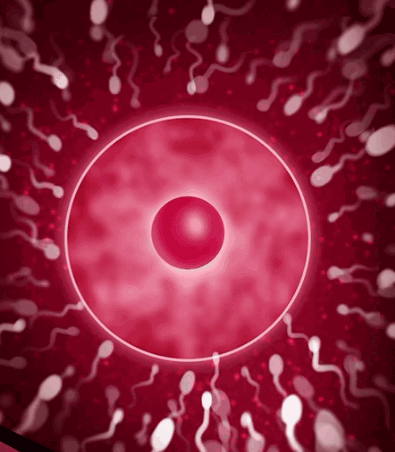Baby On Board? Prepping for the Miracle of Fertilization! ✨
Thinking about starting a family? Get ready for an incredible journey! But before you embark on this amazing adventure, let's talk about the foundation of it all: fertilization.
It's like the epic meet-cute of two tiny superheroes – a sperm and an egg – leading to the creation of life!
But before these superheroes unite, both the male and female bodies need some superhero training of their own!
Gearing Up for the Mission: Male Edition
- Diet: Think of sperm as tiny athletes. They need nutrients like zinc, folic acid, and antioxidants to be strong and motile (think super speedy swimmers!). Fruits, veggies, whole grains, and healthy fats are their fuel. Avoid processed foods, excessive alcohol, and smoking – they're like kryptonite to sperm!
- Clean Body: Sperm like a cool environment. Avoid tight underwear, hot tubs, and saunas – they can raise your temperature and affect sperm production. Think loose clothing and cooler showers for optimal performance!
- Sperm Count: This refers to the number of sperm in a single ejaculate. While individual variations exist, generally, higher counts increase the chances of fertilization. Consult your doctor if you have concerns about your sperm count.
What is the ideal sperm count?
There isn't a single "ideal" sperm count, as fertility is complex and influenced by various factors beyond just the number of sperm. However, the World Health Organization (WHO) has established reference values for semen analysis, including sperm concentration:
- Normal: ≥ 15 million sperm per milliliter (ml) of semen
- Moderately low: 10-14 million sperm/ml
- Severely low: < 10 million sperm/ml
Understanding the Reference Values:
- Having a sperm count within the "normal" range doesn't guarantee guaranteed fertility, and vice versa. Other factors like sperm motility (movement) and morphology (shape) also play a role.
- A count below 15 million sperm/ml signifies oligospermia, but individual fertility potential shouldn't be solely based on this number.
Seeking Further Guidance:
- If you have concerns about your sperm count or are experiencing fertility challenges, consult a urologist or other healthcare professional specializing in male reproductive health.
- They can perform a semen analysis and assess various factors related to your sperm and overall reproductive health. Based on the evaluation, they can provide personalized advice and treatment options if needed.
Additional Considerations:
- Fertility is a shared responsibility between partners. A semen analysis might be just one step in identifying possible causes of infertility.
- Age, overall health, lifestyle habits, and other medical conditions can also influence fertility. Maintaining a healthy lifestyle and managing stress can positively impact sperm health.
Remember, focusing on a single number like sperm count can create unnecessary anxiety. Consulting a healthcare professional for comprehensive evaluation and personalized guidance is the best approach to understanding your fertility potential and addressing any concerns.
Empowering the Egg: Female Edition
- Diet: A balanced diet rich in fruits, vegetables, whole grains, and lean protein provides the building blocks for healthy eggs. Don't forget folic acid, crucial for fetal development!
- Weight Management: Maintaining a healthy weight can positively impact ovulation and fertility. Talk to your doctor about a weight management plan that's right for you.
- Stress Management: Chronic stress can disrupt ovulation and hormone levels. Stress reduction activities like walking and spending time in nature can help you de-stress and create a more fertile environment.
Research Roundup:
- A Harvard study showed men who consumed a healthy diet rich in fruits, vegetables, and whole grains had a 25% higher sperm concentration compared to those with less healthy diets. ✨
- A large-scale study of over 12,000 women found that maintaining a healthy weight was associated with increased fertility and shorter time to conception. ⚖️. ♀️
Folic Acid: The Tiny Superhero Protecting Your Baby's Development! ♀️
Planning a family? Get ready to welcome a tiny superhero into your life! But before they arrive, let's talk about folic acid, a nutritional champion playing a crucial role in your baby's neural tube development.
What is the neural tube, and why is it important?
Imagine a tiny tube forming the foundation of your baby's brain and spinal cord. That's the neural tube, and it closes early in pregnancy, around 3-4 weeks after conception – often even before you know you're pregnant! This is why getting enough folic acid before and during pregnancy is crucial.
How does folic acid help neural tube development?
Folic acid acts like a superhero's shield, protecting the neural tube from closing incorrectly, which can lead to birth defects like spina bifida and anencephaly. It also plays a vital role in cell division and DNA synthesis, essential for your baby's healthy growth.
Here's the good news:
- All women of reproductive age, even if they're not currently planning a pregnancy, should get 400 micrograms of folic acid daily. This helps build up stores in your body for when you do conceive.
- You can get folic acid through fortified foods like cereals, bread, and juices, and by taking a prenatal vitamin. Talk to your doctor about the best option for you.
But wait, there's more on folic acid!
Research suggests that folic acid might also offer other benefits:
- Reducing the risk of premature birth and low birth weight
- Lowering the risk of cleft lip and palate
- Supporting your own health during pregnancy
Conclusion
Remember:
- Folic acid is most crucial in the early stages of pregnancy, so starting before conception is ideal.
- Don't worry if you miss a few days – just get back on track!
- Consult your doctor for personalized advice based on your individual needs and health history.
By including folic acid in your pre-pregnancy and pregnancy routine, you're giving your tiny superhero the best chance for a healthy start. That's a superpower worth celebrating!
Remember: This is just a starting point. Consult your doctor for personalized advice on preparing your body for conception. Every journey is unique, and yours is about to be an incredible one! ✨
Sources:
- Centers for Disease Control and Prevention: https://www.cdc.gov/ncbddd/folicacid/index.html
- March of Dimes: https://www.marchofdimes.org/about/news/march-dimes-highlights-importance-folic-acid-intake-national-folic-acid-awareness-week
- National Institutes of Health: https://ods.od.nih.gov/factsheets/Folate-HealthProfessional/




